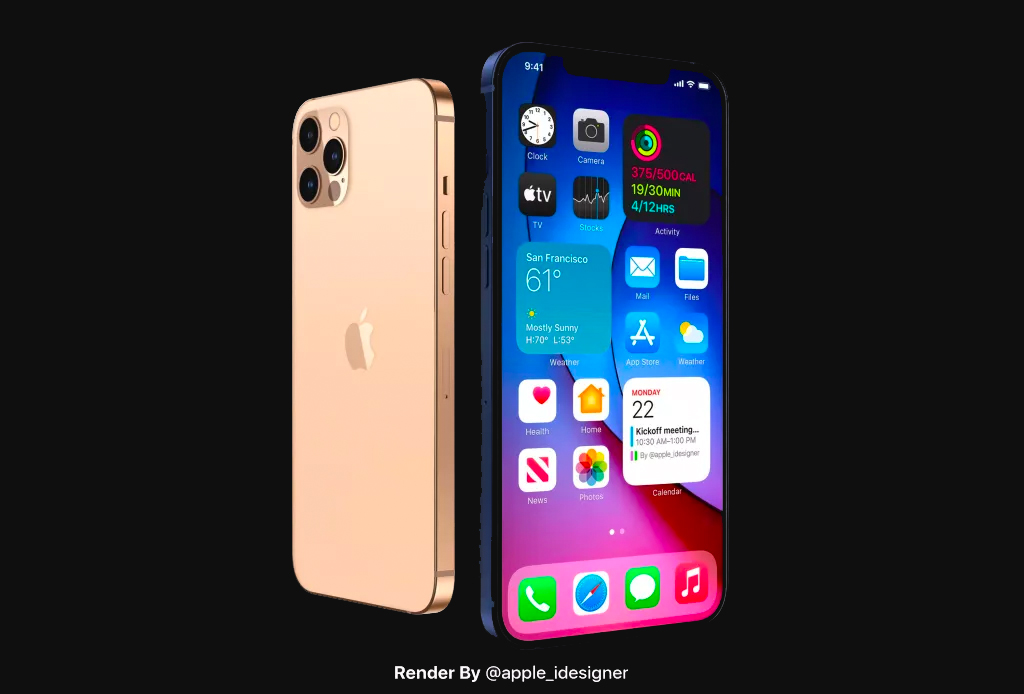iPhone 12 will be missing a key feature — here’s why that’s disappointing
The lack of a 120Hz display could put iPhone behind Android in a big way

It’s looking very likely that the iPhone 12 won't have a 120Hz refresh rate, despite the quartet of handsets set to be flagship phones from Apple.
In a "will-they, won't-they" that’s had more twists and turns than the Rachel and Ross plot of Friends, rumors and leaks swirled around the idea of the iPhone 12 having and then not having a high refresh-rate display. Now the latest rumors claim that all four models will just have a 60Hz screen, despite the iPhone 12 being delayed from its usual September launch window into what’s likely an October showcase.
- iPhone 12 vs. iPhone 11: The biggest changes to expect
- iPhone 12 starting price just leaked — and there's some bad news
- Just in: iPhone 12 killer accessory just leaked on video
And if these rumors come to fruition, I’ll be disappointed. To stick with a 60Hz display when other phones, even mid-range handsets have adopted high refresh rates, seems like a bizarre move from a company as smart as Apple. Here's why.
Apple's approach
Apple has generally trod its own path when it comes to smartphones. It took it a long time to move from single-core, to dual-core, to multi-core chips with the iPhones of yore. And while Android phones kept stretching out their displays, Apple played it safe and made small changes to its phone's display size rather than suddenly releasing a big screen phone.
It’s been generally considered that although Apple might not be the first to the market, it introduces phone feature in the best way possible once it gets around to them. At least I feel that was the case until the iPhone X.
As nice as the iPhone X was, the display notch quickly looked a bit old-hat with the rise of punch-hole selfie cameras and slimmed down teardrop notches. Granted the chunky display notch in the iPhone 11 holds the advanced Face ID scanning tech, but other phones now have secure and responsive facial recognition.
Apple has done well on the camera font, but I feel the triple-camera array of the iPhone 11 Pro felt more of a response to the clutch of rear cameras that Android phones started touting in 2018 and 2019. I can't deny that the iPhone 11 Pro takes fantastic photos. But the phone itself hammered home that Apple seems to be following Android flagship handsets with its iPhone now rather than lead the way.
Sign up to get the BEST of Tom's Guide direct to your inbox.
Get instant access to breaking news, the hottest reviews, great deals and helpful tips.
And with the iPhone 12 increasingly tipped to not have a 120Hz display, this seems to be the case more than ever.
Hit ‘em where it Hz
My current everyday phone is the Oppo Find X2 Pro, a handset with a stupid name but stellar specs. And its best feature is a super smooth 120Hz display, with a small punch hole selfie camera in the top left-hand corner to keep screen real-estate expansive.
I moved to the Find X2 Pro from a Samsung Galaxy Note 10 Plus with its 60Hz display. While I can’t claim that a 120Hz display is essential for every day phone use, it’s very nice indeed. Everything feels incredibly snappy, especially when I use gesture controls rather than virtual buttons.
While I wouldn’t buy a phone just for a high refresh-rate display, I feel it should be a requirement for any flagship phone in 2020. The Galaxy S20 phones have 120Hz displays, as does the Samsung Galaxy Note 20 Ultra and OnePlus 8 Pro.
High refresh-rate displays don't even have to be a feature of flagship phones either. The midrange OnePlus Nord has a 90Hz display, which delivers a noticeable upgrade over 60Hz; the jump from 90Hz to 120Hz isn’t so noticeable.
So the idea that a flagship iPhone 12 won’t come with a 120Hz or even 90Hz display is a little ridiculous to me.
iPhone 12 outlook
Apple always asks for a premium price for its iPhones, with the exception of the iPhone SE 2020. While some Android phones have caught up with Apple’s high iPhone prices, it still charges more for phones with specs that are beaten by cheaper Android handsets.
This has long been the case. But the lack of a 120Hz display could be the point where paying the Apple premium starts to really stick in one’s throat.
Again it’s not an essential feature, and there’s an argument that the garden variety Apple fan won’t give a hoot about screen refresh rates.
But consumers are getting ever more tech savvy and some might start asking why they should spend between $800 and $1,000 to upgrade from the iPhone X or iPhone 11 to the iPhone 12.
While the iPhone 12 is expected to deliver faster performance and better photography, I doubt many owners of an iPhone X will notice a huge difference between it and the iPhone 12 in everyday use.
Phone cameras are so good these days that the upgrade from generation to generation is only really noticeable to those that go looking for incremental improvements. And given how well optimized iOS and iPhones are, a faster chip may not be felt by iPhone X users, unless they are heavy gamers.
But the jump from 60Hz to 120Hz is a serious upgrade and difficult to go back from one you’ve tried it. So there's an argument as to why one should upgrade to the iPhone 12 beyond blind Apple loyalty if it hasn’t got a high refresh rate.
And even Apple loyalists might raise an eyebrow at buying a phone that looks a little slicker but offers no real-world improvements over their current handset. Even more so when people are becoming more environmentally savvy and economies are suffering from recessions due to the coronavirus pandemic.
I’m still holding out hope that by pushing the iPhone 12 reveal back by a month or so, Apple will have figured out a way to add a 120Hz display to the iPhone 12 Pro. But the rumors so far aren’t hopeful.
I have no doubt Apple will sell millions of iPhone 12 handsets. But if there's no 120Hz display, I certainly won't be buying one. And I’ll be disappointed that Apple didn’t delay the iPhone 12 further to ensure it has a display that’s up to 2020 standards.
Roland Moore-Colyer a Managing Editor at Tom’s Guide with a focus on news, features and opinion articles. He often writes about gaming, phones, laptops and other bits of hardware; he’s also got an interest in cars. When not at his desk Roland can be found wandering around London, often with a look of curiosity on his face.

